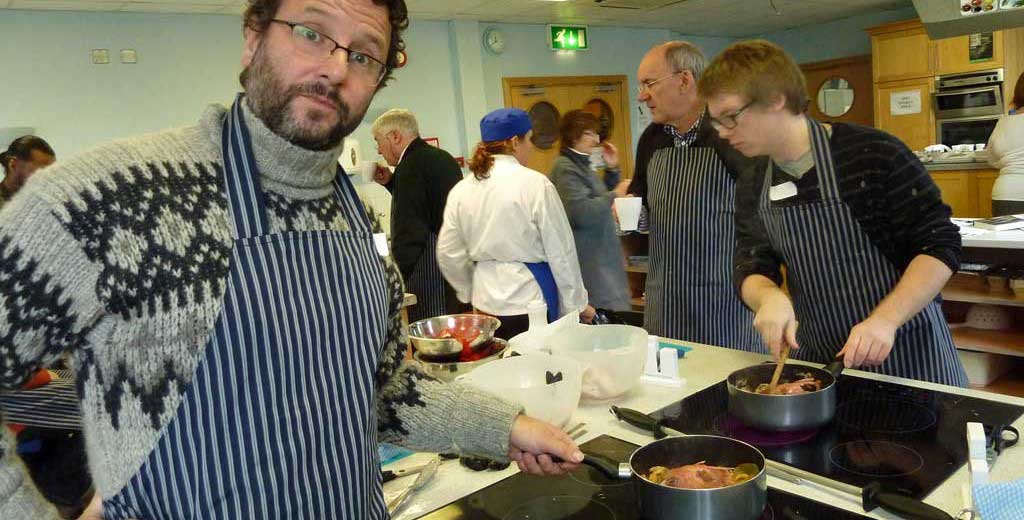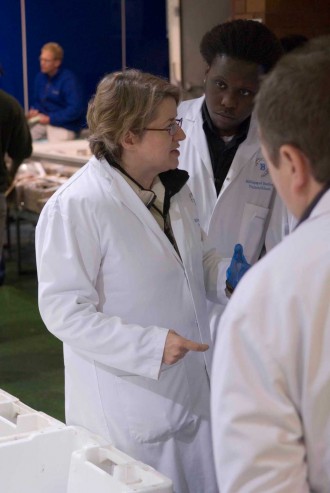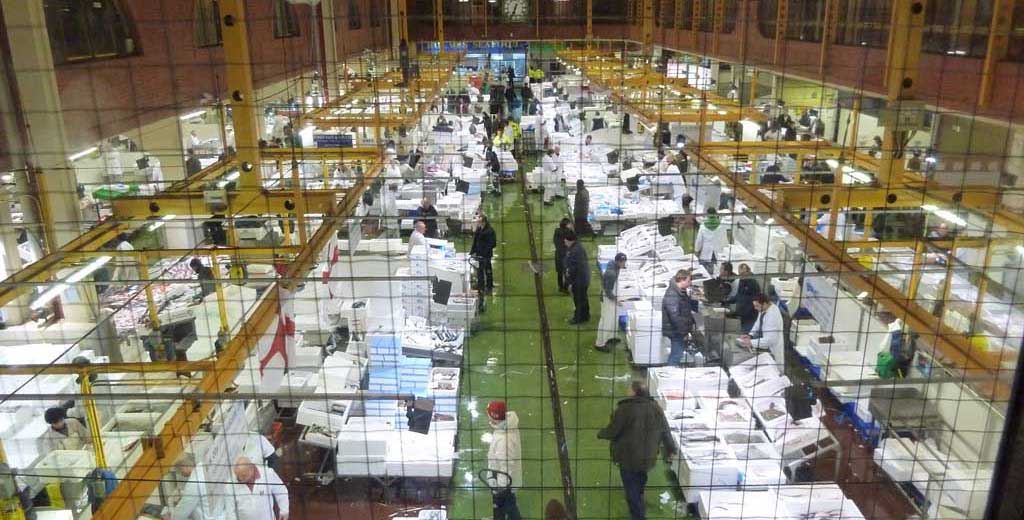Expert guidance
Want to know more about sourcing, preparing and cooking seafood? Then visit Billingsgate Seafood Training School, a pioneer in teaching schoolchildren, domestic cooks and industry professionals, perched right above the buzzing market itself.
“Seafood these days is so beautifully packaged and prepared that many of us have lost any sense of what it actually is or where it comes from,” says CJ Jackson, CEO of the Billingsgate Seafood Training School and an award-winning cook and food writer. “Children particularly tend to have a very limited concept of what the fish on their plate is. I remember reading that around 60 per cent of kids think fish fingers are made with chicken. It might sound sensationalist but I believe it – because the further away people are from the source of their food the less they know about its origins.”
It’s this belief in the need for young people to reconnect with seafood that led to the founding of the school – set up as an independent charity by the Fishmongers’ Company with the support of the City of London and the Billingsgate merchants – some 15 years ago.
“It’s been a huge success,” says CJ. “As part of our outreach programme we get to visit around 60 schools a year, teaching as many as 7,000 children about the joys of eating sustainable seafood as part of a healthy diet.
“One of the first things we do is give the children some fish to hold, smell and explore. This physical connection is really important because it helps them to understand that the fish on their plate was once a living thing. Maybe next time they’re served a fish finger they’ll ask: ‘what kind of fish went into this, where did it come from and how was it caught?’”
Children aren’t the only ones to benefit from CJ’s expertise. Perched above the busy market, the school runs weekly cookery courses that teach paying members of the public everything they need to know about buying, preparing and cooking seafood. For every adult that attends, the school aims to help at least one child. The school also provides courses for trainee fishmongers, many of which come from major UK retailers.
“It’s a really encouraging aspect of the job,” says CJ,” because it shows that supermarkets are beginning to take the skills of their fish counter staff seriously. It hasn’t always been this way. Although we are an island nation with access to hundreds of varieties of fish a lot of people are scared of handling and cooking fresh, un-processed seafood. I think it’s the smell, the eyes, the skin and the bones that worry consumers. There’s also an enduring myth that shellfish are in someway dangerous and might poison you. In the Mediterranean, of course, it’s a completely different picture – people aren’t squeamish about it at all.”
This is one of the reasons a day at the school starts with a fascinating hands-on market tour, where CJ or the one of the market’s Inspectors introduces trainees to the merchants, and explains how to tell if seafood is fresh (see A buyer’s guide). Responsible sourcing is very much part of the story too. “During the tour I try to introduce my pupils to as many sustainable varieties of seafood as possible,” says CJ, “especially underutilised fish like tilapia, gurnard, flounder, dab and John Dory – all of which taste amazing. I also throw in loads of tips to help people make more informed decisions.”

Afterwards, it’s upstairs to the seafood school kitchen to learn how to prepare and cook that season’s best fish. Recipes covered depend on availability but in the winter months trainees tackle everything from risotto nero (made with squid ink and homemade fish stock) to pan-fried puttanesca-style John Dory and Dover sole stuffed with shrimp and parsley.
“Some of the dishes sound a little fancy,” says CJ. “But a lot of the cookery techniques we teach are actually really straightforward. As a nation we tend to over-complicate things when it comes to cooking seafood but in reality really fresh fish – the kind you get from Billingsgate or a decent fishmonger – doesn’t need much adding to it. I say keep it simple but cook it properly.
“Most of us, unfortunately, are guilty of overcooking fish, making it tough and tasteless. It’s not because we’re bad cooks it’s because owing to a lack of confidence we follow the instructions on packaging word for word instead of making our own informed decisions. I want people to leave the course with a heightened sense of esteem – ready to go forth and experiment.”
A day at the seafood school, of course, ends with an almighty feast, where all the trainees get to sample the fruits of their labour – along with a glass or three of wine. “For me, this is the most inspiring part of the day,” says CJ. “There’s something truly magical about taking a whole, fresh fish and turning it into a restaurant standard meal in a matter of minutes – and all with very little cost or effort. It’s something I never get tired of doing.
For a full list of available courses at the Billingsgate Seafood Training School, visit: seafoodtraining.org or call 020 7517 3548.








